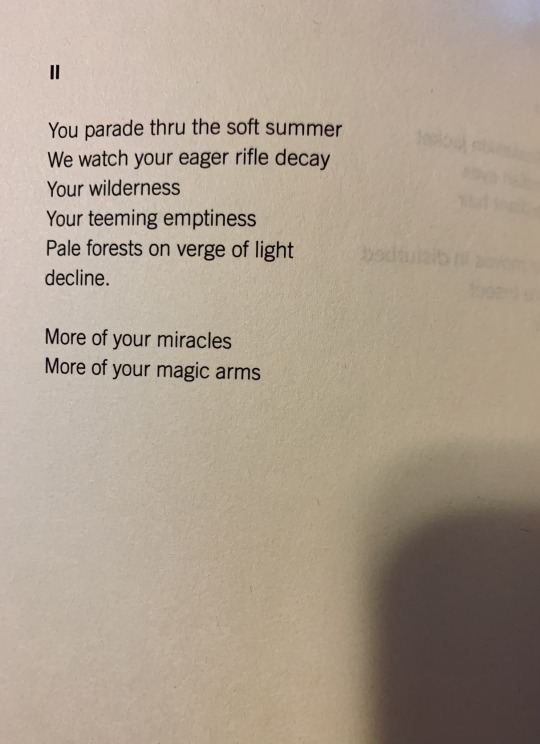#the new creatures
Text
Dance naked on broken bones
feet bleed & stain glass cuts cover your mind
Jim Morrison, from “The New Creatures”
#jim morrison#james douglas morrison#the new creatures#the collected works#writings#words#poems#poetry#fragments#lyrics#lit#literature#60s#quotes
12 notes
·
View notes
Text

Expertise can't help you here.
#dungeon meshi#kabru#laios touden#falin touden#Happy Thistle Thursday once again. Have I been holding on to this comic for several weeks? Sure have!#I forgot how long it takes for Chimera Falin to come into play.#I still really love my 'better drawn' art of her - unfortunately it was several weeks too early for the anime only folks.#Slowly getting the hang of drawing Laios. I don't know why I struggle so much but I am getting...somewhere.#Meta time: God damn I love how the chimera shows off the expertise and gap between Kabru and Laios.#The truth is: they are both *right* and they are both *wrong*.#This creature is a combination of monster and human and they only have the skillset to deal with one of those.#Kabru goes for all the human vitals - but she isn't human.#Laios tries to approach her as a monster and is struck down by the humanity he sees in her.#She is something new that defies what they *both* understand about the world. And that makes her such a perfect antagonist.#The damsel was the dragon all along!#...She is really so cute though. Terrifying! But adorable. I am so excited to see the boom of fanart for her.
26K notes
·
View notes
Text
hey guys new diagnosis just dropped: EVIL AUTISM
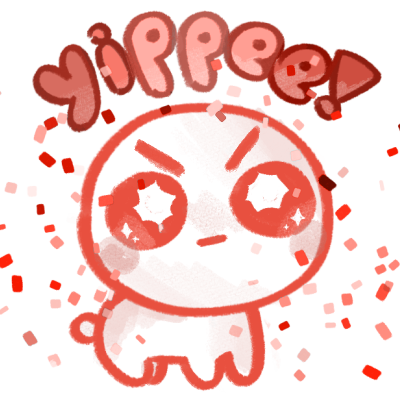


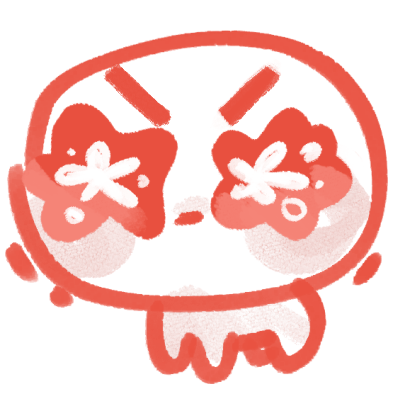


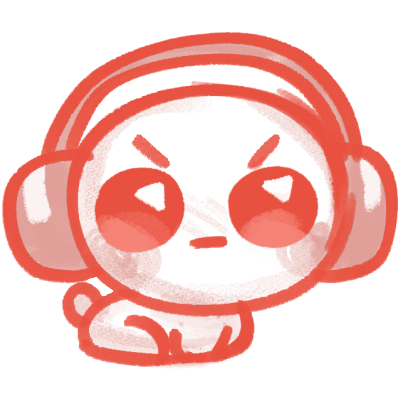

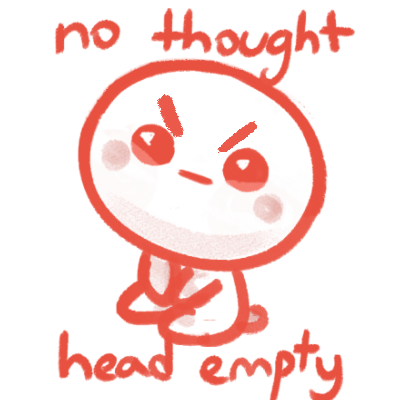

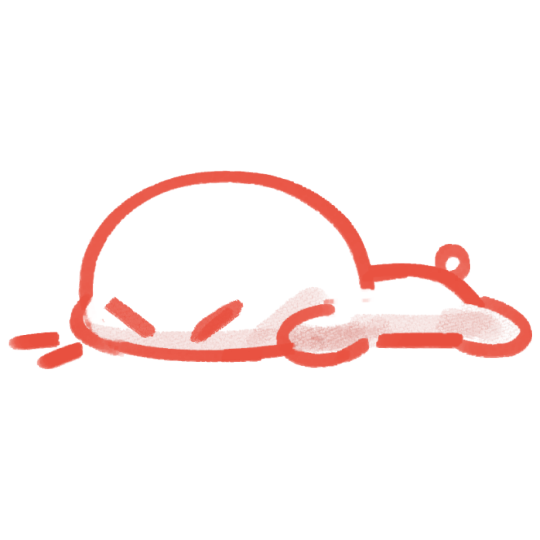

#it's autism but evil#important difference#autism creature#april fools#tbh creature#tbf creature#<- that's it's new name#autism#actually autistic#neurodiversity#doodle#artists on tumblr#digital art#art#my art#artist#drawing#custome emote#discord emote#reaction image#boop btw
16K notes
·
View notes
Text
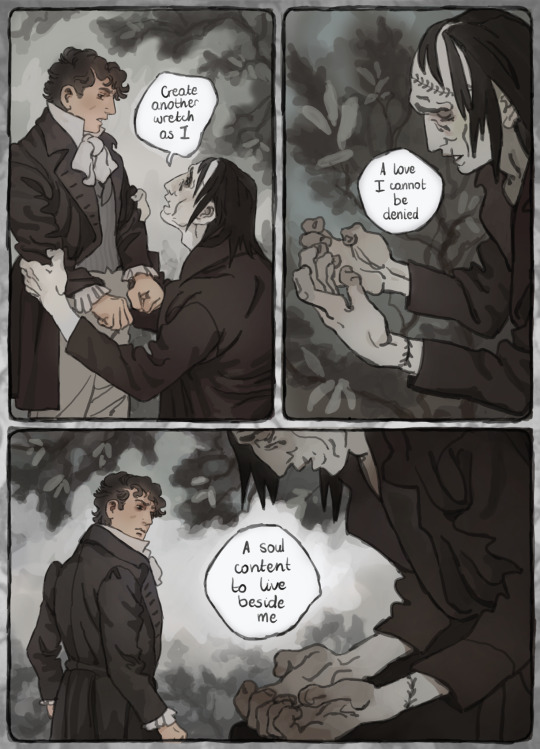
I took the text from Frankenstein: A New Musical
#Frankenstein is such a good story because after Victor declined to make another wretch like the Creature#the Creature decided to make a wretch out of Victor#it simply doesn’t get better than this#my art#frankenstein#Frankenstein a new musical
13K notes
·
View notes
Text

“Accursed creator! Why did you form a monster so hideous that even you turned from me in disgust?”
#Frankenstein#gothic literature#gothic lit art#victor frankenstein#happy new year lads#ive been thinking about nothing else but them for the past 3 days#been trying to figure out a decent design for victor and i think im getting closer#he needs to have a cruelness to him#and he needs to be kind of pathetic#someone who the creature could snap in half yknow#and i need to make the creature more Mean looking but it just feels right to draw him sad and despairing#THAT BEING SAID i think i did a good job here hehe#henry is next :)))#my art#illustration
13K notes
·
View notes
Text
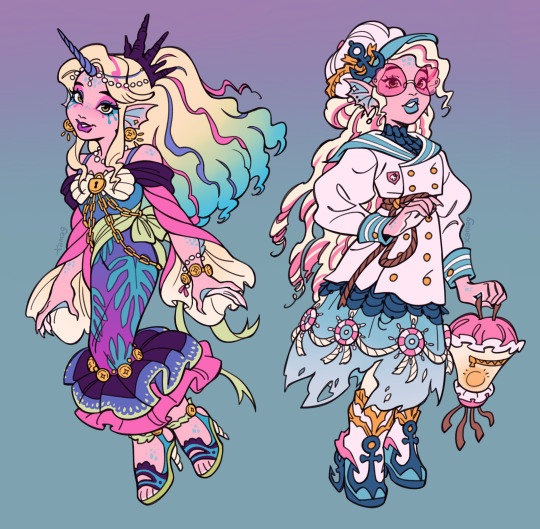

[Monster High] so since pink lagoona is a hot topic in the fandom, i though it'd be a fun challenge to try and make some pink lagoonas myself. there's actually a lot of material to work with imo!
these are all essentially looks for a recolored g1 lagoona, only the last one being intended for her g3 personality. i wanted to make more for g3, but didn't quite like them in execution, so maybe another time..
tropical treasure: beautiful, glamorous, colorful, but a bit more of an aquarium decoration than a strange beast. loosely inspired by bettas
ghost ship cruise: etherial haunty lagoona, inspired by jellyfish. light, translucent and probably cold to the touch
coy classic: elegant mermaid pond lagoona, inspired by koi fish. this one is kind of an amalgamation of her g1 dolls that exists in my head tbh
little axolotl: cute and quirky, like the new lagoona. inspired by axolotls and sea slugs :)
#my art#monster high#i wanted a crab/shrimp and a deep sea lagoona sooo bad#but it's not their time yet#i actually quite like new lagoonas holographic pastel rainbow vibe i just wish they experimented more with the sea creatures
8K notes
·
View notes
Text
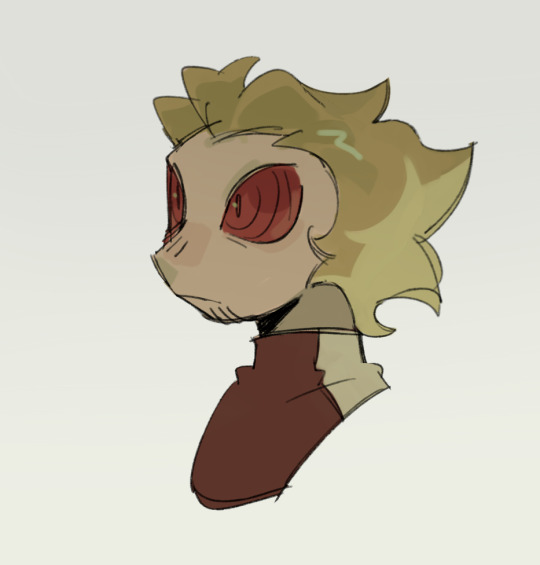

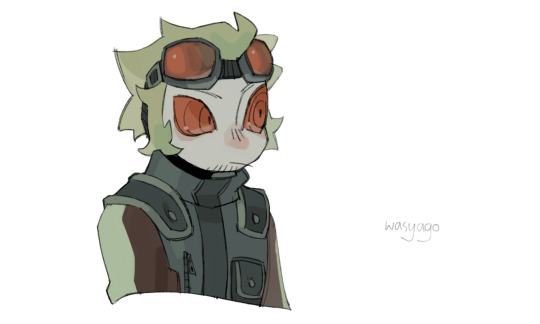
various tango doodles
#hermitcraft#tangotek#my art#sketch#i love drawing human tango so much you guys have no idea.... he's just. he's so... but the creature one is still the most favorite.#also the 3rd sketch of him with glasses..... don't think im gonna draw him with glasses anymore it just doesn't look right#idk why. maybe the forehead being covered or the fact that he doesn't have ears or something. it's just... no#in other news. im really enjoying drawing him with a bit of facial hair! it just adds that little bit of character and maturity#he looks less like a baby and i think that's a good thing#all my previous fanarts now look bald tho 😭
3K notes
·
View notes
Text

people are sharing this on insta again so here’s the version with the font i made 🥰💖
available as a postcard in my shop!
#resolution#new year#starpion#starpions#font#oc#creature#art#artist#creative#small business#small artist#digital art#design
4K notes
·
View notes
Text


the Fisher King from under the lake/before the flood
#all the strange strange creatures#doctor who#twelfth doctor#the new years resolution is to post worse and more self indulgent art at a higher rate
4K notes
·
View notes
Text
"Many people know about the Yellowstone wolf miracle. After wolves were reintroduced to the national park in the mid-1990s, streamside bushes that had been grazed to stubble by out-of-control elk populations started bouncing back. Streambank erosion decreased. Creatures such as songbirds that favor greenery along creeks returned. Nearby aspens flourished.
While there is debate about how much of this stemmed from the wolves shrinking the elk population and how much was a subtle shift in elk behavior, the overall change was dramatic. People were captivated by the idea that a single charismatic predator’s return could ripple through an entire ecosystem. The result was trumpeted in publications such as National Geographic.
But have you heard about the sea otters and the salt marshes? Probably not.
It turns out these sleek coastal mammals, hunted nearly to extinction for their plush pelts, can play a wolf-like role in rapidly disappearing salt marshes, according to new research. The findings highlight the transformative power of a top predator, and the potential ecosystem benefits from their return.
“It begs the question: In how many other ecosystems worldwide could the reintroduction of a former top predator yield similar benefits?” said Brian Silliman, a Duke University ecologist involved in the research.
The work focused on Elk Slough, a tidal estuary at the edge of California’s Monterey Bay. The salt marsh lining the slough’s banks has been shrinking for decades. Between 1956 and 2003, the area lost 50% of its salt marshes.
Such tidal marshes are critical to keeping shorelines from eroding into the sea, and they are in decline around the world. The damage is often blamed on a combination of human’s altering coastal water flows, rising seas and nutrient pollution that weakens the roots of marsh plants.
But in Elk Slough, a return of sea otters hinted that their earlier disappearance might have been a factor as well. As many as 300,000 sea otters once swam in the coastal waters of western North America, from Baja California north to the Aleutian Islands. But a fur trade begun by Europeans in the 1700s nearly wiped out the animals, reducing their numbers to just a few thousand by the early 1900s. Southern sea otters, which lived on the California coast, were thought to be extinct until a handful were found in the early 1900s.
In the late 1900s, conservation organizations and government agencies embarked on an effort to revive the southern sea otters, which remain protected under the Endangered Species Act. In Monterey Bay, the Monterey Bay Aquarium selected Elk Slough as a prime place to release orphaned young sea otters taken in by the aquarium.
As the otter numbers grew, the dynamics within the salt marsh changed. Between 2008 and 2018, erosion of tidal creeks in the estuary fell by around 70% as otter numbers recovered from just 11 animals to nearly 120 following a population crash tied to an intense El Niño climate cycle.
While suggestive, those results are hardly bulletproof evidence of a link between otters and erosion. Nor does it explain how that might work.
To get a more detailed picture, the researchers visited 5 small tidal creeks feeding into the main slough. At each one, they enclosed some of the marsh with fencing to keep out otters, while other spots were left open. Over three years, they monitored the diverging fates of the different patches.
The results showed that otter presence made a dramatic difference in the condition of the marsh. They also helped illuminate why this was happening. It comes down to the otters’ appetite for small burrowing crabs that live in the marsh.
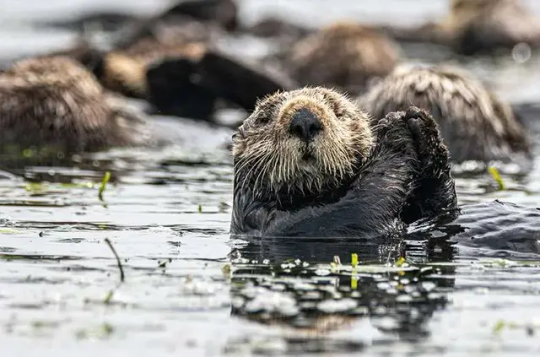
Adult otters need to eat around 25% of their body weight every day to endure the cold Pacific Ocean waters, the equivalent of 20 to 25 pounds. And crabs are one of their favorite meals. After three years, crab densities were 68% higher in fenced areas beyond the reach of otters. The number of crab burrows was also higher. At the same time, marsh grasses inside the fences fared worse, with 48% less mass of leaves and stems and 15% less root mass, a critical feature for capturing sediment that could otherwise wash away, the scientists reported in late January in Nature.
The results point to the crabs as a culprit in the decline of the marshes, as they excavate their holes and feed on the plant roots. It also shows the returning otters’ potential as a marsh savior, even in the face of rising sea levels and continued pollution. In tidal creeks with high numbers of otters, creek erosion was just 5 centimeters per year, 69% lower than in creeks with fewer otters and a far cry from earlier erosion of as much as 30 centimeters per year.
“The return of the sea otters didn’t reverse the losses, but it did slow them to a point that these systems could restabilize despite all the other pressures they are subject to,” said Brent Hughes, a biology professor at Sonoma State University and former postdoctoral researcher in Silliman’s Duke lab.
The findings raise the question of whether other coastal ecosystems might benefit from a return of top predators. The scientists note that a number of these places were once filled with such toothy creatures as bears, crocodiles, sharks, wolves, lions and dolphins. Sea otters are still largely absent along much of the West Coast.
As people wrestle to hold back the seas and revive their ailing coasts, a predator revival could offer relatively cheap and effective assistance. “It would cost millions of dollars for humans to rebuild these creek banks and restore these marshes,” Silliman said of Elk Slough. “The sea otters are stabilizing them for free in exchange for an all-you-can-eat crab feast.”"
-via Anthropocene Magazine, February 7, 2024
#otters#sea otters#conservation#erosion#coastal erosion#coastline#marshes#saltwater#marine science#marine biology#marine animals#sea creatures#ocean#sustainability#soil erosion#erosion control#crab#good news#hope
3K notes
·
View notes
Text
Stranger, traveller, peer into our eyes & translate
the horrible barking of ancient dogs.
Jim Morrison, from “The New Creatures”
#jim morrison#james douglas morrison#words#writings#the new creatures#the collected works#poetry#poems and writings#poems#literature#lit#60s#fragments#poems and fragments#quotes#lyrics
8 notes
·
View notes
Note
What the hell happens in the pikmin game?? Those little colourful bitches have been around for ages, but i never bothered looking them up, i just figured they were cute little mascots of some game. But your posts are making me question everything. Is it a horror game? (I know i could just google it, but asking you is funnier)
Yeah you're right asking me is much funnier :)
Pikmin is a fun and relaxing game! You play as a little astronaut man who gets to spend his days growing Pikmin, who are sweet and peaceful little plant creatures with leaves, buds, or flowers on their heads. You can corral them around with a little trumpet, like a bouquet of flowers following you through the pretty and whimsical landscapes of planet PNF-404 :)
Wait did I say fun and relaxing?
Sorry, typo.
It's a brutal skill-based survival game (❁´◡`❁)
So then maybe you're wondering, what's up with the Pikmin? What was that about growing a bunch of little flower guys? Well growing the Pikmin is super important!
It's super duper important mainly because you need to replace the Pikmin who die in the carnage of battle for you!
Battle against what?
Everything.
See on PNF-404, Pikmin are the bottom of the food chain. Just about every living breathing creature on this planet is orders of magnitude larger than the Pikmin and munch Pikmin by the hundreds for breakfast. Predators will do this instinctively. They will do this unprompted. They will do this while you're not looking. They will do this endlessly until every last Pikmin is dead.
So... what good are the Pikmin? What chance do they stand?
Really easy. Pikmin are the most violent creatures in the entire game 🥰🥰🥰.
How else do you survive when you're small and fragile other than incredible violence? Pikmin can exist out and about in swarms of up to 100. And the only way to survive predators as small little leaf creatures is to beat those predators to death with incredible mob violence before they can kill all of you.
Pikmin don't die like plants. They die like warriors.
And sometimes, this is the hardest mechanic to handle. Left to their own devices Pikmin will seek to shed blood. It's up to you to call them away from orchestrating their own demise, their own pursuit of the glory of Valhalla. It's in their nature. It's in their plant-blood.
And they go down hard. They shriek when snapped up in the jaws of predators. They glub and wail when drowning in water. They trill out screams when on fire. They choke and cough in poison. They die instantly to electricity. And you'll know a Pikmin is well and truly dead once it lets out a final whimper, and a ghost drifts away from where it once stood. This can happen by the dozens. This can happen to all 100 at once.
So wait, wait I've gotten far ahead of myself. Why the violence? Why the death? Why the fighting? What was that about a little astronaut man?
Well your astronaut man is Olimar, an honest and simple family man who's a freight ship captain from his home planet of Hocotate. He's a truck driver! He's just a guy taking his first vacation in years.
And a meteorite strikes his ship, tearing it to pieces as it crash-lands on a completely uncharted planet. Welcome to PNF-404...
And so you're Olimar. A truck driver. A nice dad. A victim of capitalism with the world's worst boss. Out on vacation.
Your ship is destroyed. No one is coming for you. No one will save you.
The oxygen on PNF-404 is poisonous.
You have 30 days before your life support system runs out.
You have 30 days until you die a brutal and lonely death.
Your only hope is to find every scattered missing piece of your ship--30 of them--strewn across the planet, return them to your ship, and repair it, before your 30 days are up.
But this is simply impossible. You're one tiny little man. You wouldn't be able to lift a single piece of your ship, let alone 30 of them, let alone doing so while fending off the wildlife hellbent on killing you.
But the Pikmin seem to like you...
So all that death? All the carnage and destruction? It's all in the effort to repair Olimar's ship before he suffocates. You pave a path of destruction decorated with the bodies of any creature that stands before you and your missing ship pieces.
The Pikmin do it. The Pikmin trust you. The Pikmin follow your command and die by your command. After all, you're growing their species. Oh did I forget to explain that part? The "how" of how growing Pikmin works?
Simple. Pikmin are grown from the corpses of the creatures they kill :).
If you kill something, the Pikmin take it back to their base and process it for pieces, and grow new Pikmin from it. That's how you get all the nice little flower creatures following you around. :)
Is it good enough? Can you sleep at night knowing that 50 creatures who trusted you implicitly were slaughtered under your misdirection? All to retrieve a hunk of metal which is 1/30 of the hope of getting you home alive? 100 slaughtered? 200? Day 30 is approaching. Things are looking bleak.
You're Olimar. Day 30 has arrived, and you haven't fully reconstructed your ship. You have no option to stay. Your life support has run out. You watch the Pikmin you've left behind, as you attempt to start up your ship which has not been safely repaired.
You try to take off, and try to make it home.
It does not go well.
But at least the Pikmin have another corpse to carry.
#pikmin#and maybe. if youre me. you are 6 years old the first time you get Olimar killed#because your sweet and well-meaning aunt bought the colorful little creature game for you for christmas#for your family's new game cube#chrissy talks pikmin
5K notes
·
View notes
Photo




Kate Winslet & Melanie Lynskey
Heavenly Creatures (1994) dir. Peter Jackson
#heavenly creatures#kate winslet#melanie lynskey#heavenly creatures 1994#filmedit#peter jackson#juliet hulme#pauline parker#gif#film#90s#90s movies#worldcinemaedit#fyeahmovies#dailyflicks#moviegifs#filmgifs#cinemapix#new zealand cinema#parker-hulme#tvandfilm#filmtvdaily#userfilm#usersource
2K notes
·
View notes
Text
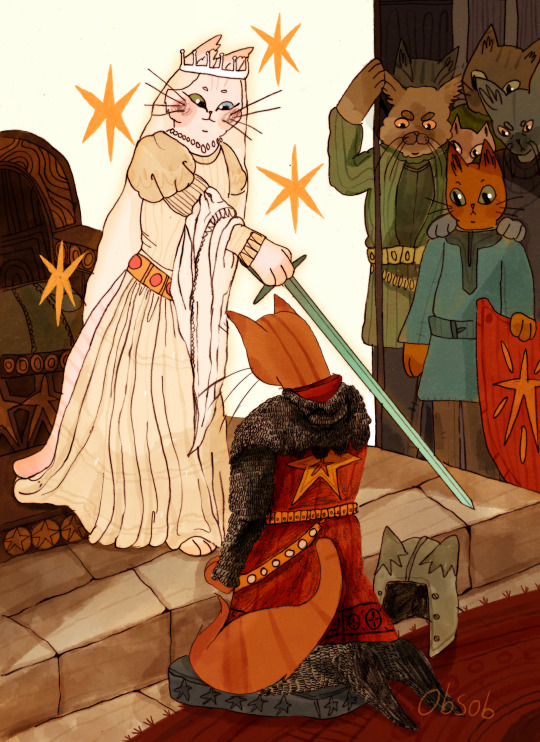
the accolade ( the...the cat-olade...)
#mine#original#i cannot even begin to explain the anguish. the torment. this drawing has brought me#and i STILL dont like it. i simply cant work on it any longer i cant i cant. i must be rid of it#eating drywall as we speak#you want to know how many weeks ive worked on this. THREE. ALMOST.#you want to know how long my other cat drawings take me ?? 3 days absolute MAX#anyway. begon foul creature etc#i havent left extremely long tags for a long while hello everyone good lord there are many of you#we are going stratford this weekend very exciting#its going to be a little chilly and i want to take my new coat with me but issue its not chilly right now so i cant wear it onto the train#i do not think. i can. stuff it into my suitcase i dont think that will happen#i am sure i will figure it out#also. no longer vegan . eggs have won me over. egg egg egg.#im having to restrain myself SO hard from buying more wool i want a shawl i want a shawl#i want more cute DRESSES why are nice comfy dresses 10000£#i look on vinted and its like dresses for popping your pussy in like not. the vibe im going for thank u#anyway. im going to eat crackers now
4K notes
·
View notes
Text

Presented a panel on fallout creatures at a con today and used my biology degree to validate and criticize design choices in equal measure
12K notes
·
View notes
